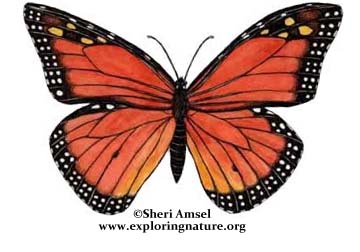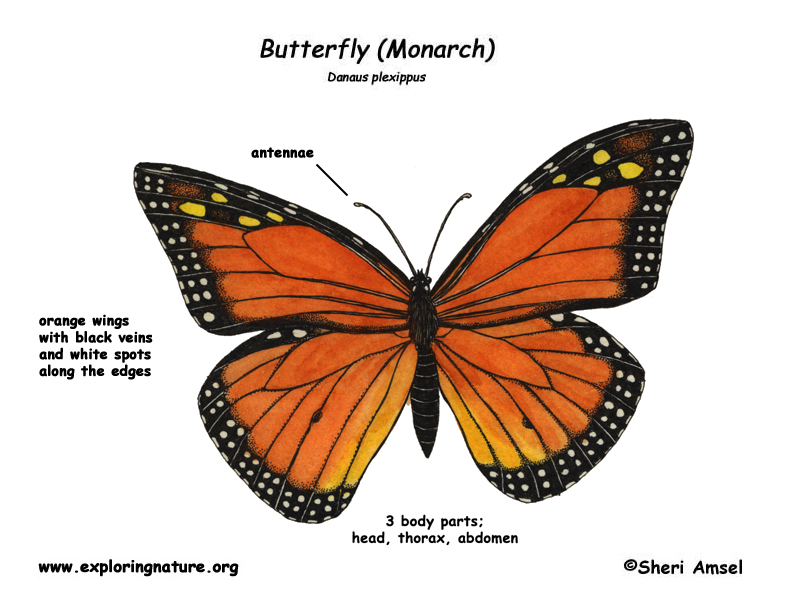

They are found in southern Canada and south throughout the U.S. to Central and South America. They are also found in Australia and Hawaii.
They live in open, weedy places like fields and marshes.
They have orange wings with black veins and white spots along the edges. Their caterpillar is black, yellow, and white striped. Their wingspan is up to 5" wide.
They are poisonous to birds because of their milkweed diet. They are the only butterfly that migrates yearly, flying thousands of miles south into central Mexico.
The caterpillars eat milkweed and the adults eat milkweed flower nectar.
Females lay a single egg on a milkweed leaf. When it hatches, the caterpillars eat the milkweed.
Kingdom: Animalia
Phylum: Arthropoda
Class: Insecta
Order: Lepidoptera
Suborder: Macrolepidoptera
Family: Danaidae
Genus: Danaus
Species: D. plexippus
When you research information you must cite the reference. Citing for websites is different from citing from books, magazines and periodicals. The style of citing shown here is from the MLA Style Citations (Modern Language Association).
When citing a WEBSITE the general format is as follows.
Author Last Name, First Name(s). "Title: Subtitle of Part of Web Page, if appropriate." Title: Subtitle: Section of Page if appropriate. Sponsoring/Publishing Agency, If Given. Additional significant descriptive information. Date of Electronic Publication or other Date, such as Last Updated. Day Month Year of access < URL >.
Amsel, Sheri. "Butterfly (Monarch)" Exploring Nature Educational Resource ©2005-2024. December 13, 2024
< http://exploringnature.org/db/view/287 >

